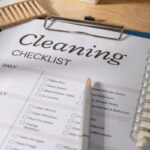A flooded basement provides even the most stoic homeowner a Feeling of helplessness and anxiety. Take advantage of this advice and do it as soon as your basement flooding.
Unexpected problems on your house are not enjoyable, but they are common. A flooded basement may provide even the most stoic homeowner a feeling of helplessness and dread. In case you’ve got a basement flooding, do your best not to over-analyze the circumstance. It might not be as bad as you might think. According to the experts at ServiceMaster Restore, that provides 24/7/365 answer to flooding scenarios in your house, here is some things you can do if your basement flooding.
- Before you do so, Make Certain to shut off some electricity Around the region, including gas and electricity. Never enter into a flooded area while the electricity is on. If you are not certain how to shut off these areas, call a professional electrician prior to going into the area and start to get the job done.
- Until the water is Brought on by rain, do it as Soon as you detect flood. If storm or rain water is the reason for the flood, then wait till it is passed prior to getting to work.
- Whatever the water origin, wear gloves and boots for protection. You could also decide to wear a protective mask. Hip or chest waders might also be helpful if they’re readily available. Take care when moving and walking around the flooded region because it’s going to probably provide itself as a falling hazard.
- Ascertain the origin of the water. In case a burst pipe would be your Cause of this flooding, shut off water into the cellar.
- If your basement has a floor drain, check to Be Certain that it Did not become obstructed during the flooding. Keeping it open and working will help drain water.
- Start eliminating water in the cellar. Based on the Quantity of plain water, you may use a sump pump, either a pool pump, either a wet/dry vacuum or a mop and bucket. Sump pumps are situated at the lowest aspect of a cellar and operate by sending water from the house after a flood. With no sump pump, water may develop through the floor and enter the house resulting in flooding in not just the cellar, but other areas of the home too. Once the majority of the water was taken away, soak up the rest with a fabric or sponges. Do not be timid about asking for assistance — a lot of an additional pair of hands can produce the removal go quicker.
- Move damaged objects from the cellar to wash in a Well-ventilated location. If weather allows, a sunny location can give itself as the most suitable choice. It is best to not wash out things within the cellar, which is damp. A fantastic guideline would be to provide things about 48 hours to completely dry. Should they stay moist, they might have to be lost so as to prevent mould and mildew. The very best advice would be to inspect matters carefully following the 48-hour interval, and pick the most appropriate plan of action. Do not attempt to store wet cardboard boxes, because they may be particularly prone to bacterial growth. Salvage the contents of these boxes in the event that it is possible, and discard the cardboard boxes to be secure.
- Do not touch electric items such as televisions, stereos or Lamps, in spite of all the power disconnected. It is ideal to allow electric items dry set up, and consult with an electrician or qualified repairman to find out the total amount of harm.
- Rip up carpets and get it from the cellar as soon as possible. Carpeting can stop the flooring beneath from drying if it is not removed immediately. Even though it can be tricky to satisfactorily dry out these substances, occasionally wet carpets can be stored. Consult with a restoration expert or a carpet cleaning contractor for recommendations. If carpeting is not dried properly, in addition, it can fight mold and mildew.
- provide the cellar a few days of drying period. Open Doors and windows to get too much ventilation as you can, and put fans around the area for air flow and to accelerate drying time. You could even lease a dehumidifier if you don’t have one.
- Wash down walls and floors to remove any dirt left behind. From the water. Remove any damaged or wet gutters and shingles to keep the spreading of mould.
- Once the walls and floor are dry, then use an anti-mildew spray To deter mildew and mold from growing.
- For those who have flood insurance, call Your House insurance Business and report the flooding. Verify your policy limitations, deductible amount, and maintain processes.






